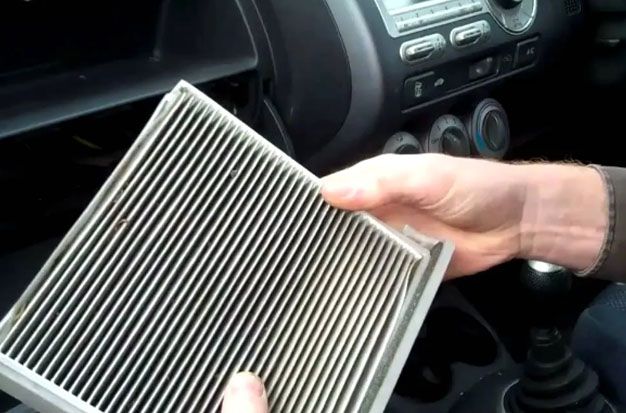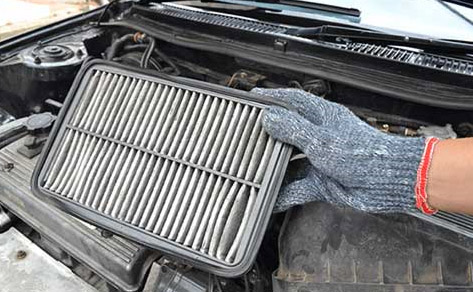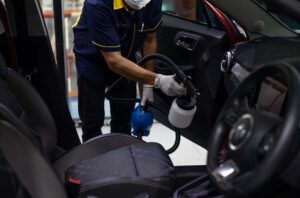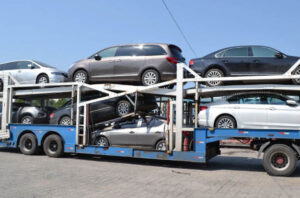
How Often Should I Change Car Air Filter?
A filthy filter allows polluting and allergen particles, dust, sand, and other debris into the engine and vehicle. They may eventually cause health problems and damage to the motor system. For this reason, you should swap out your air filters as needed.
There are various variables that affect how frequently you should change (or wash) your car’s air filters.
Your vehicle’s specifications, the distance you drive, and the weather where you drive all affect how long your filters last. Along with mileage, we’ll offer a few pointers for knowing when to change the filter.
What Are Car Air Filters For?
One for the engine and one for the cabin are usually included in a car.
A breathable material, like paper, cotton, or foam, is used to create the screens. Before they reach you or the engine, they serve as a major filter for sand, dust, pollen, pollution, and even mold.
Engine Filters
Your engine’s performance is greatly influenced by the quality of the air entering the motor. The cylinder walls and pistons of the engine would sustain damage if screens weren’t present to prevent these particles from entering.
Cabin Filters
Air pollution can cause cardiovascular and respiratory conditions, whether it’s in your home or while you’re driving. To put it bluntly, it claims millions of lives each year.
High-efficiency cabin air filters, like HEPA filters, are helpful in this situation. They significantly protect the health of drivers by capturing 99.97 percent or more of all particles that are 0.3 microns or larger.
How To Replace The Engine Air Filter In Your Car
Step 1: Pull up the hood of your car. Look for a sizable, typically black, plastic box perched atop or to the side of the engine to identify the engine air filter housing. A sizable hose ought to protrude from one side.
Step 2: Take note of the way the filter housing is fastened. The majority of the time, opening it only requires two hands and a little effort. The use of clamps, clips, screws, wing nuts, or a combination of these by some manufacturers, however, necessitates the use of a specific tool.
Step 3: The housing’s top can be opened. Old air filter removed and discarded. Use a shop rag to clean out the housing of any remaining debris.
Step 4: Place the new engine air filter inside the housing, rubber rim facing up, and then install it. Make sure it is snugly and correctly seated inside the housing.
Step 5: Replace any missing fasteners (screws, clips, etc.), then close the filter housing.) removed in Step two is to zip up the hood. That’s it!

How Frequently Do I Need To Change My Car Air Filter?
Replacement of engine air filters should be done frequently. In a nutshell, it depends on when you should replace yours. The filter-changing schedule can be influenced by a number of factors, including your driving style, the year, make, and model of your car, as well as your location (if you drive through an especially hot or polluted region). Checking your owner’s manual’s maintenance chapter or using Google to find the manufacturer’s suggested service interval will give you the most accurate idea of how frequently to change the engine air filter. It can range from 15,000 miles in difficult driving conditions to up to 45,000 miles.
A simple visual inspection can provide a “status check.” The newest filters are off-white or very bright white. A dirty engine air filter will usually look dirty with visible dirt, dust, or stains inside the pleats. If you’re unsure, ask any reputable mechanic in your area, and they can provide you with an answer. Most average drivers should be able to go one to two years without needing a new air filter, as a general rule. Those mechanics who advise replacing the engine air filter each time you have your car’s oil changed (i.e., every 3,000-5,000 miles) are a red flag.
How Often Should I Replace My Car’s Cabin Air Filter?
As part of your vehicle’s routine maintenance, you should also change your cabin air filters frequently, just like you would with your vehicle’s air filters. The majority of manufacturers advise using scheduled intervals of between 15,000 and up to 45,000 miles. Consider replacing your car’s filters at the same time to make things easier. The good news is that changing your car’s cabin air filter is both simpler and less expensive than doing the same for the engine air filter. With little to no tool use, anyone can complete it in under five minutes.
TipsTo Change An Air Filter
You can get the filters changed for you at a car dealership. But it’s simple to check and replace the engine and cabin filters when necessary.
Engine Air Filter
Typically, a filter box under the hood will contain this filter. Some models can be accessed by simply opening the box, but others need a screwdriver. Make sure the new screen you buy fits the box’s dimensions.
Cabin Air Filter
The cabin air filter is typically located either under the dashboard or behind the glove box in most automobiles. The first time you change it might take a little longer, but after that it is a simple procedure.
Filtering Down
To keep your car and your lungs functioning properly, you must change both the engine and cabin air filters. The distance traveled determines how frequently to change the air filter in your car. However, some visual cues can help you determine whether you need to replace the screen.
Keep in mind that not all filters need to be changed; some can be washed and are therefore more environmentally friendly. Don’t throw away a single-use filter if you choose one because many dealers will recycle it. Make sure the screen will fit in its designated location before choosing it.
Conclusion
Typically, new air filters are either off-white or white. You can visually inspect your engine air filter to see if it appears dirty or if it’s clogged with debris. Remember that sometimes particles that are too small to see can clog an air filter. But it’s definitely time to replace the filter if you notice that it’s gray or clogged with debris. To learn the precise location of the air filter in your vehicle, consult the owner’s manual.


Average Rating